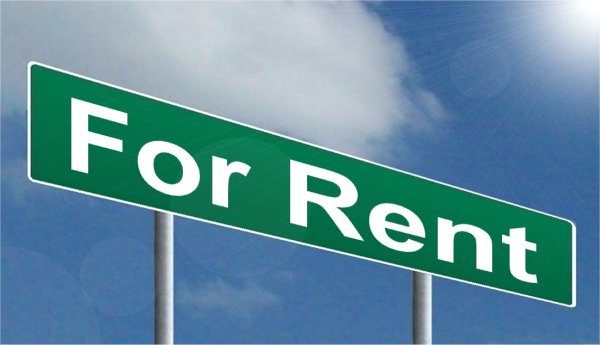Calculating the Return on Investment of a Rental Property


Along with being the Broker Manager of Howard Hanna Rand Realty in Jersey City, I have also personally invested in residential rental properties over the last decade. It is important to know how to calculate if a property will be profitable and what the return on investment (ROI) will be. The first thing you should know is if you are Value or Cash Flow investing.
Value Investing is when the primary purpose of purchasing a property is to hold it with the hope that the value of the property will increase. Purchasing a property in a high growth area for $100k and selling it a few years later for $500k would be an example of this. With these properties, it is okay to just break even with rental income.
Cash Flow Investing is when the primary purpose of purchasing the property is to make money through rental income. All costs considered, your rental income should be high enough that you can consider it income.
Of course, the ideal case would be that you find a property that falls within both parameters. That can be hard depending on where you are located and how much capital you have.
For the purpose of this post, we will be focusing on Cash Flow Investing.
Now let’s get into calculating if a property is profitable if you are financing the property.
Firstly, let’s go over all of the costs that you have to consider initially and then on an ongoing monthly basis of owning a rental property.
Out of Pocket Cost:
Initially, you would have to consider how much money you have to put down to purchase the property. Usually, it can be anywhere from 0-20% depending on your credit, the type of property and other factors. Let’s say you are purchasing a property that is worth $150,000 and have to put down 20% ($30,000). You also have to consider closing costs. For this example, closing costs are $10,000 for calculation purposes. Another cost that you usually have to pay that most people don’t consider is the following year’s property taxes. Say that property taxes for this property are $10,000 per year.
In total, the initial cost of purchasing this property will be $50,000. Meaning you will need this cash on hand right off the bat to purchase this property.
EDIT: I forgot to add Inspection costs. I have seen them range from $300-$2,000 depending on the property size and location. For this blog post, I will keep the math the same, but be aware that it is usually mandatory or highly recommended to have an inspection done.
Ongoing costs:
Now it is time to calculate what your costs will be on a monthly basis. Continuing with the example from above, we will have to finance $120,000. People usually pick between financing over 15 or 30 years. We will finance over 30 years here. For investment properties, the interest rate is around 5%. We will use 5% for this example. You can use many online tools to calculate your monthly mortgage costs. Google search Mortgage calculator.
The monthly mortgage cost alone will be $644.19 per month on the $120,000 over 30 years at an 5% interest rate.
Next, you will have to also factor in the property taxes for the next year into your calculation as well as a Landlord Insurance Policy. Our property taxes for this property is $10,000 and let’s say the insurance policy is $2,000 per year.
The total monthly cost of this property is $1,644.19.
Other hidden costs to consider:
-In some cases, if you put less than 20% down you will be charged what is called PMI. PMI stands for Private Mortgage Insurance and you will have to add this to the monthly mortgage cost if needed. I have seen it being anywhere between $150-$300 per month.
–Common/HOA/Maintenance Charges: Some properties (Often Condos/Coops) charge common charges to maintain the property (cutting the grass, snow removal, pools, etc.). These costs will also need to be considered on a monthly basis. The price of common charges really depends on the type of property, amenities included and where it is located.
Is it profitable for Cash Flow Investing:
Now its time to do some research on the average rental costs in the area. Search through my real estate website and other sites like Zillow to see what the rental prices are for properties on the same block/building and in nearby locations.
If the average rental is $2,200 in the area, this may be a good Cash Flow property (considering a $1,644.19 monthly cost).
If it is $1,500 or below, I would not consider it for cash flow (considering a $1,644.19 monthly cost).
I usually only choose properties that can generate a monthly return of $600 or more, but it is based on personal preference.
Calculating simple ROI:
For rental properties that you have financed, it is good to calculate your return on investment.
For the purposes of this example, our monthly cash flow from the property is $500 per month (rental income minus ongoing monthly charges). This would result in an annual return of $6,000 ($500 x 12 months) from rental income after all costs.
If the out of pocket cost (initial cost) of purchasing the property is still $50,000, our ROI will be calculated as follows:
$6,000 (annual cash flow) ÷ $50,000 = 12% ROI
This formula can get very complex as some people use an amortization table to also factor in the principal (mortgage) paydown. I would say that a 12% simple ROI is good. It would take roughly 8 years to break even on your initial investment ($50k/$6k).
I would also suggest reading the book HOLD: How to find, buy and, rent houses for wealth by Steve Chader if you are considering residential real estate investments.
I hope you guys enjoyed this post. More will be coming soon! Until next time…
Broker Manager
Howard Hanna Rand Realty
Direct: (845) 480-4527
Email: harveer.singh@randrealty.com
Website: www.RealEstateSingh.com
Instagram: @RealEstateSingh

 Facebook
Facebook
 X
X
 Pinterest
Pinterest
 Copy Link
Copy Link
